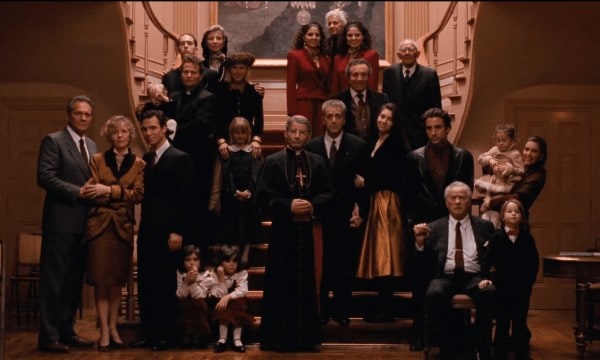Mario Puzo’s The Godfather Coda: The Death of Michael Corleone.
Directed by Francis Ford Coppola.
Starring Al Pacino, Diane Keaton, Talia Shire, Andy Garcia, Eli Wallach, Joe Mantegna, Bridget Fonda, George Hamilton, and Sofia Coppola.
SYNOPSIS:
Francis Ford Coppola revisited The Godfather Part III for a re-edit that he’s called The Godfather Coda: The Death of Michael Corleone. It’s an improvement on the original, although the film will never be held in the same regard as the first two installments. The only bonus feature is an introduction in which Coppola explains what the new title, which is actually an old title, means.
Like George Lucas, Francis Ford Coppola can’t seem to resist revisiting his movies and fiddling with them. However, you can make an argument that Coppola’s changes are worthwhile and amount to more than scenery changes. He released Apocalypse Now Redux a while back and Cotton Club Encore earlier this year, and now he’s put out The Godfather Coda: The Death of Michael Corleone.
The third film in the Godfather series deserved many of the negative reviews heaped on it over the years, and, unlike Apocalypse Now Redux, I don’t think this new version manages to repair some fundamental problems with the movie. While it’s not awful, it’s weakened first and foremost by a Michael Corleone who seems like he’s played by an Al Pacino impersonator. Pacino has turned in some solid performances in recent years, but Godfather Part III was made during a period when he became a caricature of himself.
Yes, Sofia Coppola’s performance remains as wooden as ever, something that no amount of editing could ever fix, since you can’t just cut her character out of the film. And speaking of excised characters: the absence of Robert Duvall’s Tom Hagen still looms large. The crime family’s trusted consigliere was the moral center of the first two films, and without him, there’s no one to advise Michael against following a new path that will lead to tragic consequences, at least not the way Duvall could have done it.
Regarding the overall story, Coppola has re-ordered scenes, given the film a new beginning and editing, and sliced about 13 minutes off the running time. Instead of opening on the dilapidated Corleone family estate in Reno, it begins with Michael at the Vatican, where he learns that his quest to go legit, as they say, will require him to cut a deal with a holy man gone bad.
Opening the film on that note underscores the idea that this version of the film is a true coda, albeit one that’s a bit longer than you’d expect. While The Godfather Part II gave Michael Corleone a satisfying ending in which he had achieved great wealth and power at the expense of his family (his father warned him about that), this new version of the third film serves as a protracted fade-out of his existence. It underscores the idea that he was never going to escape the grip of a life of crime – “Just when I thought I was out, they pull me back in!” he famously exclaims – and could even be seen as what he imagined the rest of his life would be like as he sat there, alone, at the end of Part II.
The third Godfather film will never been seen in the same light as the first two, but that’s okay. This new version, which was also remastered and thus looks better than it ever has on home video, is still worth a viewing for fans who want to make up their own minds about the trilogy.
The only bonus feature on the disc is a 90-second introduction by Coppola, who notes that the film’s new title is actually its original one, for reasons that he explains. It’s unfortunate that the director didn’t also supply a commentary track, like he’s done for the Godfather movies’ previous home video releases, but perhaps there were understandable reasons for that.
You’ll also find a code for a digital copy of the movie.
Flickering Myth Rating – Film: ★ ★ ★ /Movie: ★ ★ ★
Brad Cook















